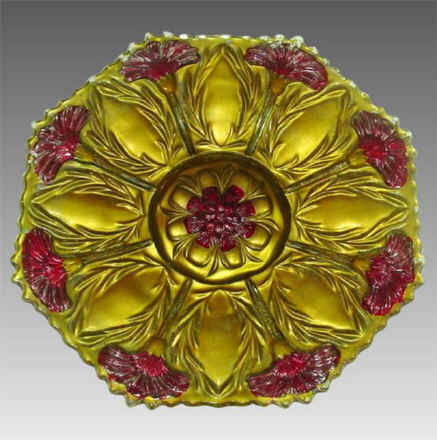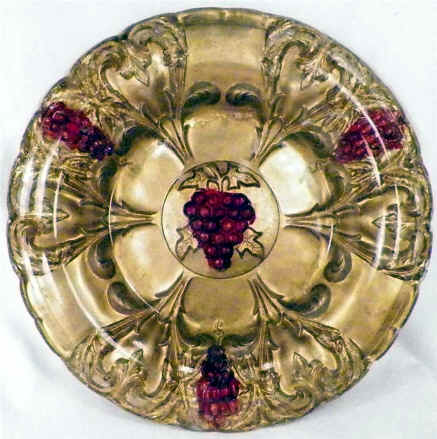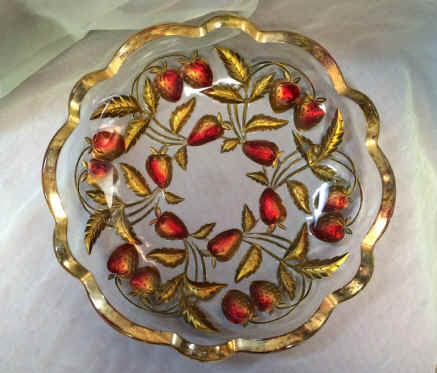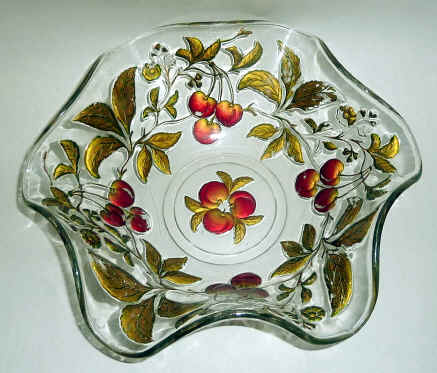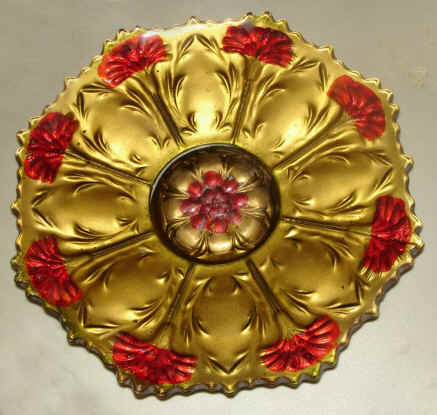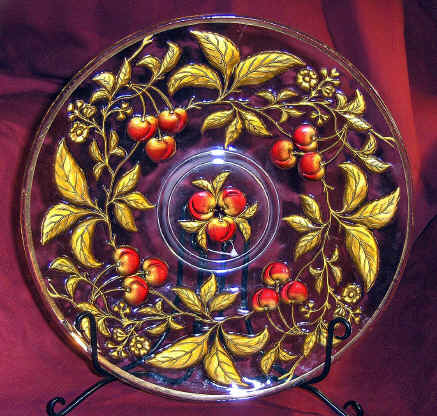|
Beauty is in the Eyes of the Beholder By Bob Brooke
Manufacturers didn’t originally call it "Goofus" glass. They had no designation of Goofus glass in their salesmen's catalogs. They didn’t even recognize it as a specific classification of glass. Goofus glass, at its inception, was just a variety of pressed glass. The term "Goofus" refers more to the use of unfired "cold" painted decoration to a piece of pressed glass, rather than to the glass itself. Many people believe the first users of Goofus noticed how easily the painted decoration on this glass wore away and felt that it was "goofy" or that someone had tried to "goof us."
Production began in 1888 with blown glassware. The original output of the firm included lampshades, tableware, water sets and berry sets. Northwood functioned as the general manager and chief designer, who, even at this time, showed a preference for vivid colors, years before the inception of goofus glass.
Always innovative, Harry Northwood was probably the first to make what has come to be known as Goofus glass and, a few years later in 1908, Carnival glass. Other companies, such as The Imperial Glass Company of Bellaire, Ohio, focused immediately on Goofus glass. Other companies soon joined them, including the Crescent Glass Company of Wellsburg, West Virginia, Lancaster Glass Company in Lancaster, Ohio, Westmoreland Glass of Grapeville, Pennsylvania, Dugan Glass Company of Indiana, McKee Glass Company of Jeannette, Pennsylvania, and Indiana Glass Company of Dunkirk, Indiana, which produced more Goofus glass than any other manufacturer.
Manufacturers marketed Goofus glass with names evoking far-away exotic places and wealth. Some of these included Egyptian Intaglio, Egyptian Art, Khedive (meaning "viceroys of Egypt, Golden Oriental, Artistic Decorated, and Intaglio Art.
Glass companies produced plates, bowls, vases, oil lamps, dresser sets, salt and pepper shakers and candle holders. Many of the Goofus patterns featured flowers and fruit, especially grapes, among other motifs, raised out of the surrounding glass as seen in vases, powder boxes and lamps. The pattern could also be pressed into the glass from beneath the surface providing an intaglio effect as found in Goofus plates, baskets and candy dishes. Because of the extensive use of red, green, and gold paint, Goofus glass became known as "Mexican ware" because the colors reminded buyers of the colors in the Mexican flag.
By the beginning of the Great Depression, Goofus glass production had come to an end. It’s difficult to find a piece of Goofus glass in perfect condition whether the paint was applied to the outside or the inside of a piece. The worn paint became so unsightly it was washed away by the original or subsequent owners. Collectors pay more to own pieces made for special occasions or to commemorate a World’s Fair or another event than other nondescript pieces. They also look for complete sets such as a large berry bowl with matching smaller bowls. Goofus collectors seek out rare oil lamps complete with glass shade and matching base. Of course, Goofus glass in all shapes and forms in great condition with very little paint wear will bring a much better price than a piece with considerable paint loss. As an avid collector of a variety of antiques and collectibles for the last 20 years, Bob Brooke knows what he’s writing about. Besides writing about antiques, Brooke has also sold at flea markets and worked in an antique shop, so he knows the business side too. His articles have appeared in many antiques and consumer publications, including British Heritage, Antique Week, Southeastern Antiquing and Collecting Magazine, www.OldandSold.com, and many others. To read more of his work, visit his main website at www.bobbrooke.com or his specialty antiques site at www.theantiquesalmanac.com |
